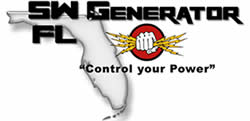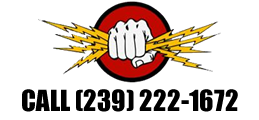How Does a Whole House Generator Work?

1. Understanding Whole House Generators:
Home standby generators, commonly referred to as whole house generators or backup generators, are designed to supply electrical power automatically when there is an interruption from the main power source (utility grid). These amazing devices offer peace of mind by virtually eliminating downtime during blackouts.
2. The Components of a Whole House Generator System:
a) Generator Unit:
At the heart of every whole house generator is an internal combustion engine fueled by natural gas or propane. This engine drives an alternator that generates electricity.
b) Automatic Transfer Switch (ATS):
The ATS constantly monitors your utility’s power source. When it senses a loss of power from the grid, it signals the generator’s engine to start up automatically within seconds.
c) Electrical Panel:
The electrical panel manages and directs electrical current flow throughout your home’s circuits during normal utility operation and while using generator power.
3. Step-by-Step Process: How Does It Work?
Let’s examine how a typical whole house generator operates when there is a blackout scenario:
Step 1: Power Outage Detected
When a blackout occurs due to storms or other reasons affecting the main grid connection, the automatic transfer switch (ATS) senses this loss of power instantaneously.
Step 2: Generator Activation
The ATS signals the generator to start, and the internal combustion engine ignites. This engine is connected to an alternator that begins generating electricity.
Step 3: Power Restoration
Once the generator is up and running, it starts producing electrical power. The ATS then automatically switches your home’s electrical circuits from utility power to generator power seamlessly, without any interruption.
Step 4: Resumption of Normal Operations
With your home running on backup generator power, appliances such as refrigerators, air conditioning units, lights, and other vital equipment continue functioning as usual until utility power is restored.
4. Safeguards and Convenience:
Modern whole house generators also feature additional functionalities to optimize performance and ensure convenience:
a) Automatic Shutdown:
When utility grid power returns after an outage, the automatic transfer switch senses it and safely shuts down the generator system while seamlessly transitioning back to grid-supplied electricity.
b) Self-Testing Capabilities:
To guarantee reliability during critical times, whole house generators can perform self-diagnostic tests automatically at regular intervals. These tests help identify any issues so that repairs or maintenance can be conducted proactively.
Conclusion:
Whole house generators provide homeowners with consistent electrical supply despite outages by working in tandem with various components such as a generator unit, automatic transfer switch (ATS), and electrical panel. Knowing how these systems function can give you peace of mind during uncertain times when reliable electricity becomes essential. If you’re located in Southwest Florida and want professional assistance regarding whole house generators or need further information specific to your needs contact SWFL Generator at (239) 222-1672 or visit their website [https://swflgenerator.com]. Stay powered up and uninterrupted!

